Aum House
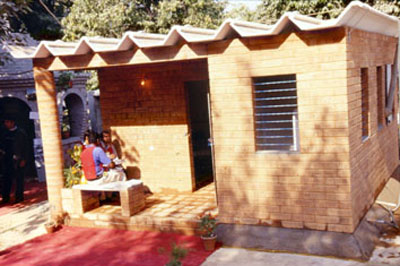
The initial idea was to create a disaster resistant and cost effective house, which could be precast anywhere and transported by lorry to the place where the disaster occurred. The technical concept satisfied this requirement. The house was cost effective, even with the provision for disaster resistance, but the transportation cost was more than the house cost. Therefore, such a project was not economically viable.
The prototype of this 23m2 AUM House has been built during the India International Trade Fair 99 at New Delhi. The house was prefabricated at Auroville and transported in a single lorry. The house weighed around 22. 5 tons and the lorry took 5 days to cover 2,900 Km between Auroville, Tamil Nadu, and New Delhi.
• 2000 at Narangarh, Orissa, at the occasion of a six-week training course, with a grant from HUDCO, for the rehabilitation of the zones affected by the cyclone of October 1999.
• 2001 at Khavda, Gujarat, in 62 hours by a 20-men team. It was the starting point of rehabilitation programmes for the zones affected by the earthquake of January 2001.
• 2002 at Mundra, Gujarat, at the occasion of a six-week training course, sponsored by HUDCO, for the rehabilitation of the zones affected by the earthquake of January 2001.
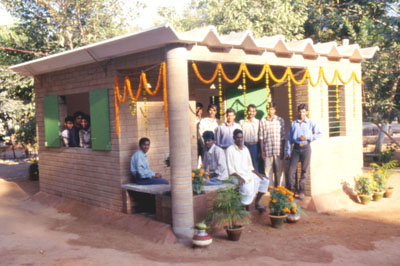


It was possible to transport this house over such long distances only for the sake of demonstrations. Thus, the packing was done in a very special way that cannot be replicable for normal cases. Firstly, the transportation cost was prohibitive and secondly the keys of the interlocking blocks must not be damaged. Therefore, it is not advisable to transport this house over long distances. On the contrary, these blocks could be transported from village to village, but still, with a certain care, as it has been done by the Catholic Relief Services in Gujarat.
Some developments have been made from what was done in Gujarat. Three major modifications should be noted for the improvement of the design and technology:
• Increase of the front wall length, so as to get a stronger shear wall.
• Replacement of the veranda’s column by a sidewall with a corner.
• Modification of the block size and the binder: The blocks are now 295 mm long, and laid with cement sand mortar.





Aum house at New Delhi
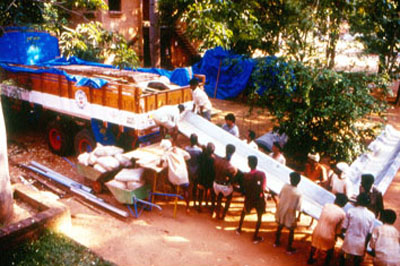




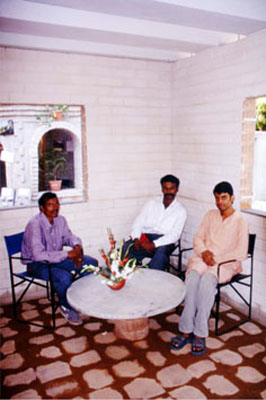
Aum house at New Delhi


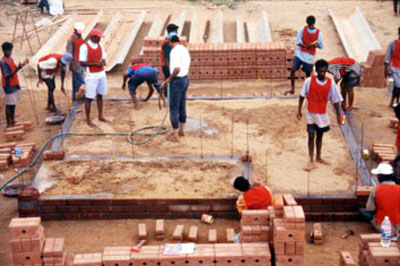





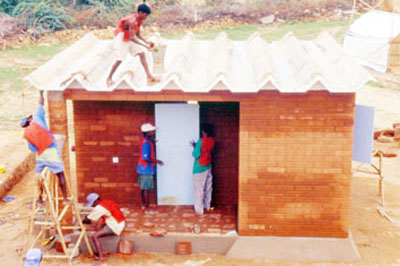
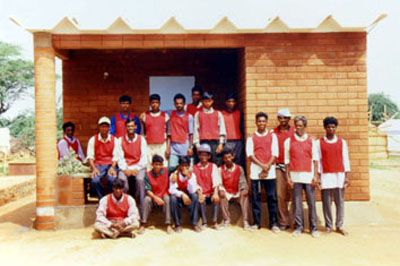

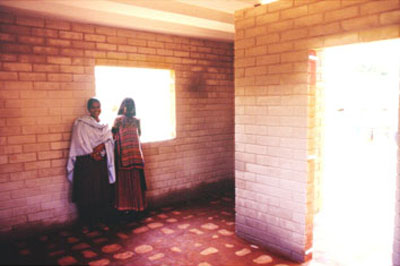

- Sharanam Center for Rural Development, 2015-2018
- Kaza Eco-Community Centre, 2013-2015
- Realization Community, 2007-2012
- Movable House, 2008
- Nataraja Temple, 2006
- Marakkanam, 2005-2006
- Al Medy Mosque, 2004
- Aum House, 1999
- Dhyanalinga, 1998-1999
- Vikas Community, 1991-1998
- Deepanam School, 1994-1995
- Visitors Center, 1989-1992
Contact US
- Address:Auroville Earth Institute, Auroshilpam, Auroville 605 101 - T.N. India
- Phone:+91 (0) 413 - 262 3330 / 262 3064
- Email:info@earth-auroville.comOpens in your application

